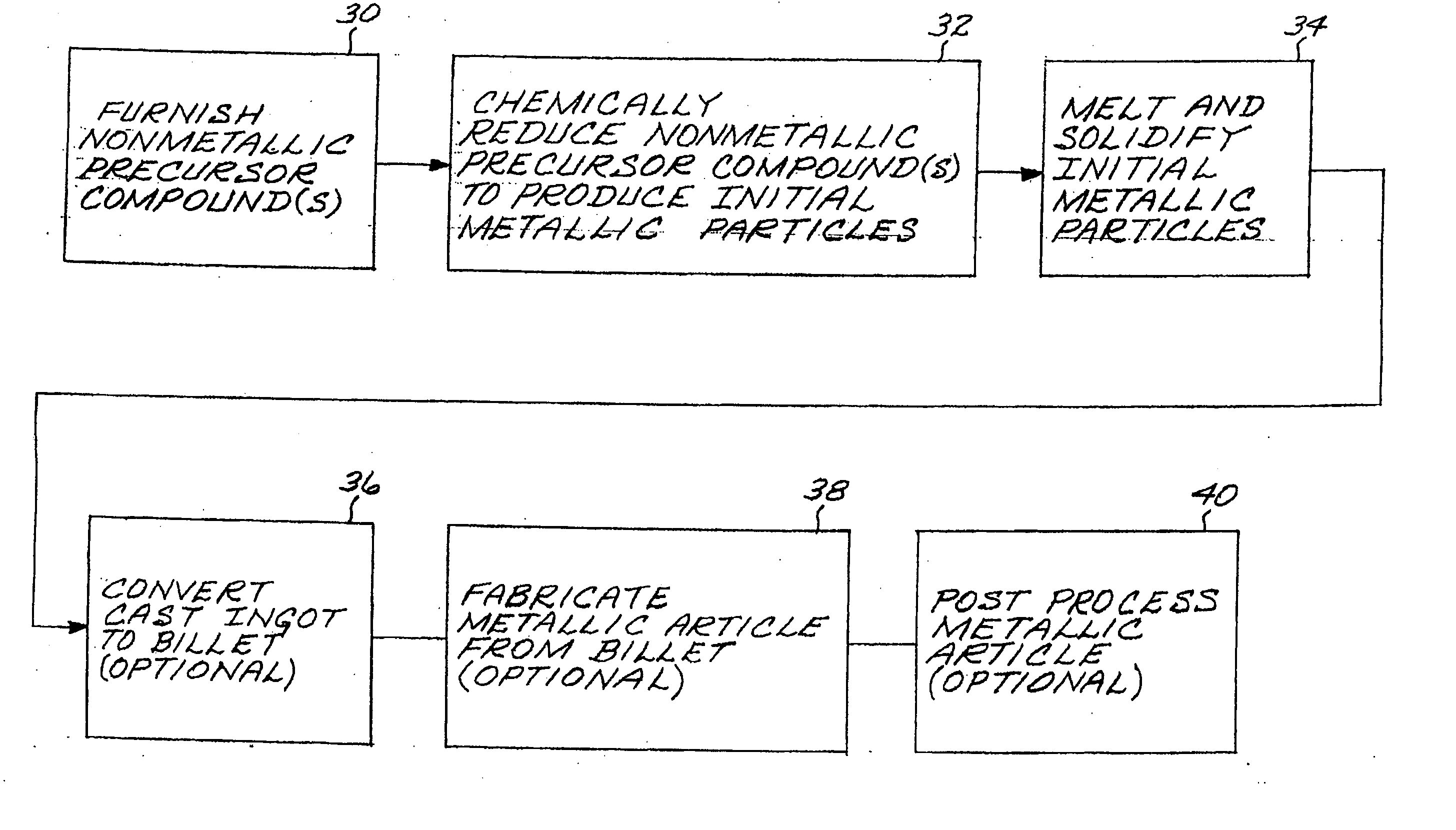Producing nickel-base, cobalt-base, iron-base, iron-nickel-base, or iron-nickel-cobalt-base alloy articles by reduction of nonmetallic precursor compounds and melting
- Summary
- Abstract
- Description
- Claims
- Application Information
AI Technical Summary
Benefits of technology
Problems solved by technology
Method used
Image
Examples
Embodiment Construction
[0020] The present approach may be used to produce a wide variety of final articles 20. FIG. 1 illustrates one such article 20 of particular interest, a gas turbine engine disk 20 made of a nickel-base alloy such as a nickel-base superalloy. The present approach is not limited to the production of such an article as depicted in FIG. 1, however. Some other examples of gas turbine engine components that may be produced with the present approach are spools, blisks, shafts, blades, vanes, cases, rings, and castings made of nickel-base, cobalt-base, iron-base, iron-nickel-base, or iron-nickel-cobalt-base alloys, as well as structural components for applications other than gas turbine engines such as airframe cast and wrought parts. Such articles are potentially subject to the formation of a variety of mechanical and / or chemical defects. The present approach reduces the incidence of such defects and with reduced costs.
[0021] The present approach is most preferably applied to the producti...
PUM
| Property | Measurement | Unit |
|---|---|---|
| Time | aaaaa | aaaaa |
| Composition | aaaaa | aaaaa |
| Microstructure | aaaaa | aaaaa |
Abstract
Description
Claims
Application Information
 Login to View More
Login to View More - R&D
- Intellectual Property
- Life Sciences
- Materials
- Tech Scout
- Unparalleled Data Quality
- Higher Quality Content
- 60% Fewer Hallucinations
Browse by: Latest US Patents, China's latest patents, Technical Efficacy Thesaurus, Application Domain, Technology Topic, Popular Technical Reports.
© 2025 PatSnap. All rights reserved.Legal|Privacy policy|Modern Slavery Act Transparency Statement|Sitemap|About US| Contact US: help@patsnap.com



